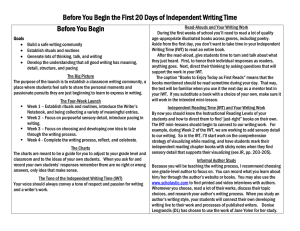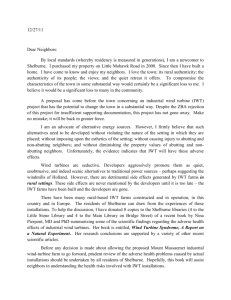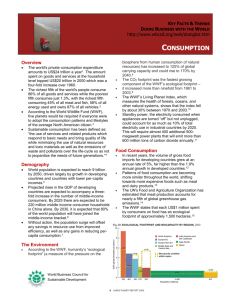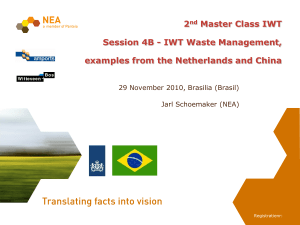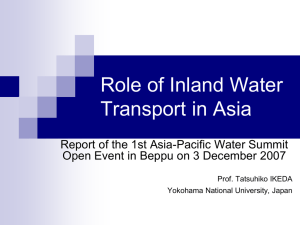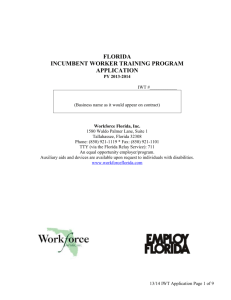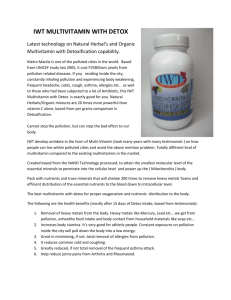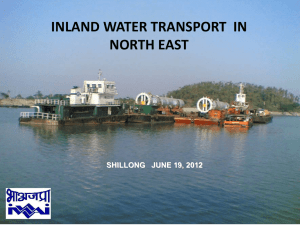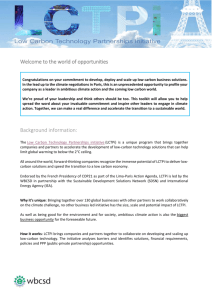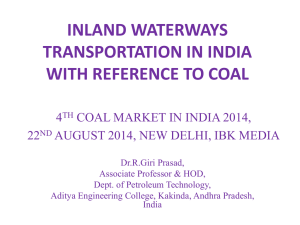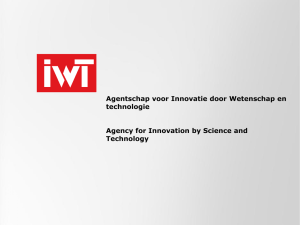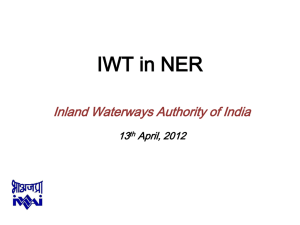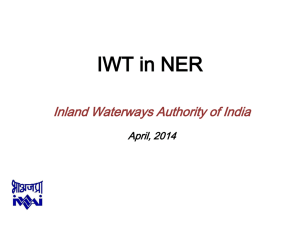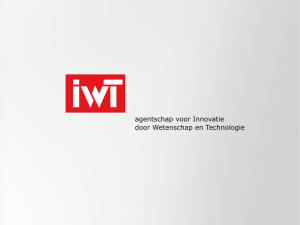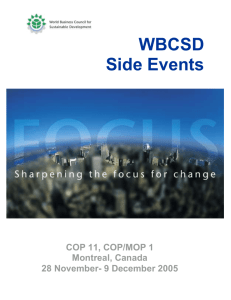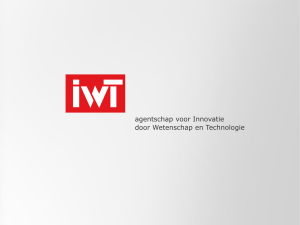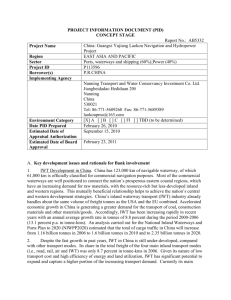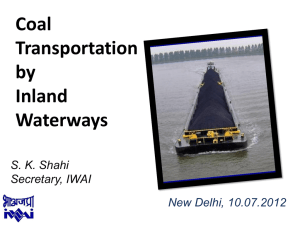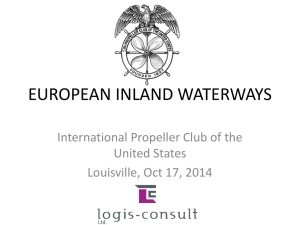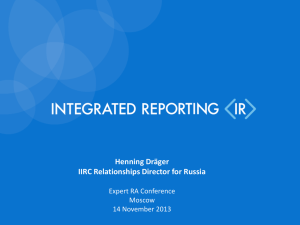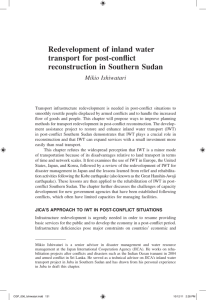India Water Tool
advertisement
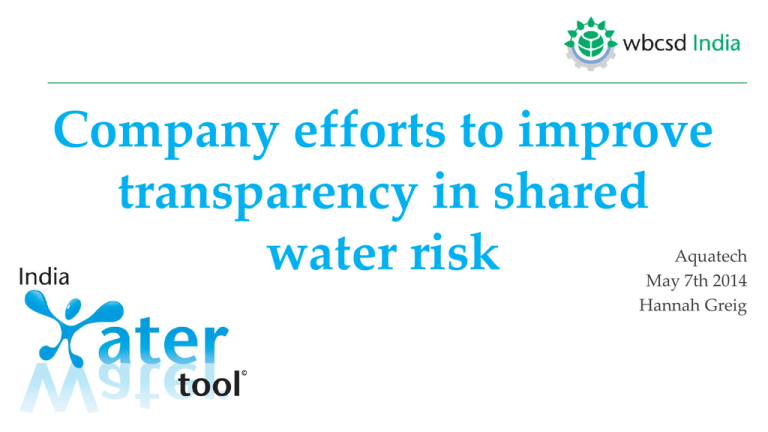
Company efforts to improve transparency in shared water risk Aquatech May 7th 2014 Hannah Greig What is the WBCSD? A CEO-led coalition of some 200 companies with a shared commitment to sustainable development via the three pillars of economic growth, ecological balance and social progress. Today • Increasing business participation in reducing shared water risk • Developing an India Water Tool v1 summary of progress challenges and success’ • India Water Tool version 2 next steps and timeline Increasing business participation in reducing shared water risk (I) 63% of respondents to CDP 2013 water questionnaire set concrete targets or goals for their direct operations. Companies that continue with such a narrow focus could be missing potential opportunities and overlooking serious risks. Water crisis and extreme weather events are among the top ten global risks of highest concern according to the WEF Global Risks Report 2014. Respondents’ water stewardship activities must be stepped up to mitigate risks to their companies and investors. CDP Global Water Report 2013 Increase business participation in reducing shared water risk (II) Shared risks = shared opportunities = shared responsibilities Reduce risks of business disruption Ensure business continuity over time Contribute to government & community efforts in countries of operation Phase I: Company-wide water risk assessment to determine business value at risk & identification of most at risk areas E.g. resources/experts WRI Aqueduct Water Risk Atlas WBCSD GWT & sector customization/GEMI LWT WBCSD India Water Tool WWF Water Risk Filter WBCSD Guide to water valuation AWS, EWS and others OECD Water Governance Principles Good water governance for mgmt & allocation Phase II: Development of comprehensive water strategy, including local action plans Action by business B2B dialogues and transferability to SMEs Water use efficiency across agri supply chain Water treatment & reuse Investment in natural water infrastructure Access to WASH Climate change impacts & resilience Phase III: Implementation of water stewardship strategies at enterprise & local level; action outside the fence line with other users in the watershed India Water Tool v1 and v1.1 Scoping and data • 14 companies • WBCSD part time coordinator • Columbia Water Centre (India) data inventory • Data collation • Data formatting Version 1 – July 2013 • 1,500 downloads in 6 weeks • CGWB + RAMSAR data • India-specific outputs • CDP and GRI metrics • Case studies published Version 1.1 – September 2013 • Additional ground water level data sets (better granularity) • DJSI and Bloomberg metrics Working group Challenges Source: CGWB DATA! Source: CWC Source: River basin atlas of India, CWC and ISRO, 2012 Source www.indiaenvironmentportal.co.in Results IWTv1 and 1.1 released - helps Indian industry assess it’s water risk and prioritize sites for further action Demonstrated Indian business can collaborate and show leadership in tackling water issues Credibility and access with other data providers for the next version Good relationships with key Government agencies (CGWB, India WRIS) IWT v1.1 How does it work? Input location info for each site and supplier in India To produce excel tables and graphs Number of sites in each CGWB categorization of blocks Number of sites where water quality standards are breached And Google Earth maps for all Indian operations Input water data for each site Terminology based on GRI terms and definitions To generate CDP, GRI, DJSI and Bloomberg metrics How are people using the tool? • PRIORITZE: Get overview of site and supply chains - How many of my sites are in over-exploited or critical areas? - What % of my production is in over-exploited or critical areas? - Is my site in an area where the ground water level is rising or declining? - What have been the highest and lowest ground water levels in my area in the last 5 years? - Which of my sites are in areas where the concentration of inorganic contaminants (fluoride, chloride, nitrate, salinity, arsenic) in ground water is above permissible limits for drinking water? And what % of my production takes place in areas where there are these breaches? - How many of my sites are located in or near RAMSAR protected areas • INTERNAL DECISION MAKING PROCESSES: prioritize funding • ADVISING CLIENTS ON POTENTIAL RISKS: consultancy (India, US) Development of version 1 as much about the process as the outcome. Publicity, momentum and the power of demonstration.. 19 companies participated in scoping for version 2. More data sets available More potential partners Version 2 – needs and priorities (identified July 2013 workshop) Understand water stress at site level and impact of company in the location • More comprehensive picture of stress/scarcity (include precipitation, surface water etc) • More comprehensive picture of water quality • Competing demands in the watershed • Physical risk Promote greater transparency with stakeholders • Government and regulators • Engage supply chains • Engage competing users in a watershed • Allow sectoral benchmarking IWT v2 By December 2014 develop, test and launch a version 2 with supporting materials A more holistic picture of the water situation (including water stress) Measure and map organisation’s water risk in India at a meaningful scale to identify their most at-risk areas Outputs credible to industry and Indian government entities - engages Government of India as part of the process Developed in collaboration with CII Triveni Water Institute and World Resources Institute, Columbia modelling* - moves towards greater compatibility with other water risk tools for future convergence. *TBC IWT v2: New data for inclusion • • • • • • Central Ground Water Board (CGWB) groundwater data updates India Meteorological Department rainfall data Central Pollution and Control Board surface and ground water quality data Central Water Commission runoff and discharge data. Aqueduct global map "cut-outs" for India showing current and future water stress (2010, 2020, 2030, 2040) and any other indicators on the Aqueduct platform; Columbia Water Centre’s district water stress index (TBC) IWTv2 working group Advisory board of experts Sub groups Reporting and standards Water quality Ground water, surface water and rainfall Water modelling Agriculture Water withdrawal Stakeholder outreach IT Platform IWT v2: value for working group members • Shape the development of the tool and create a credible platform for dialogue with other users in your watersheds • Demonstrates leadership on water issues and make a tangible and timebound contribution to addressing the water challenge in the country. • Direct engagement with Government agencies on water – changing the dynamics of the relationship? • Contribution recognised in all IWT related publications (WBCSD website, press releases, presentations etc). IWT – 2014 and beyond? 2014 2013 - IWT v1 and v1.1 launch - IWT v2 - Improved SALDAS (surface water modelling 5-10km) - CII demand side data project 2015-2017 - IWT v3 full convergence with Aqueduct? - Inclusion of SALDAS and CII data? - Dynamic updates? Resources To download IWT v1.1 for free go to http://www.wbcsd.org/indiawatertool.aspx For a demo of IWTv1.1 or more information about joining the working group for v2 contact Hannah Greig, India Water Tool Coordinator at Greig@wbcsd.org Publications: http://www.wbcsdpublications.org/ Sharing Water: Engaging Business Why watershed approaches are important to business sustainability
